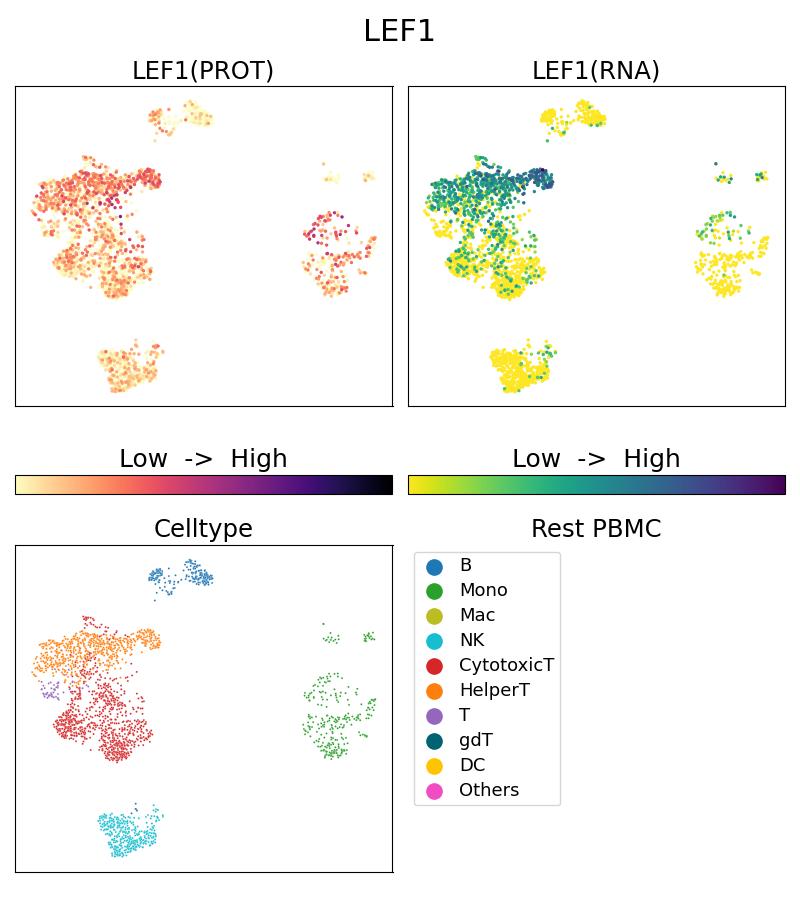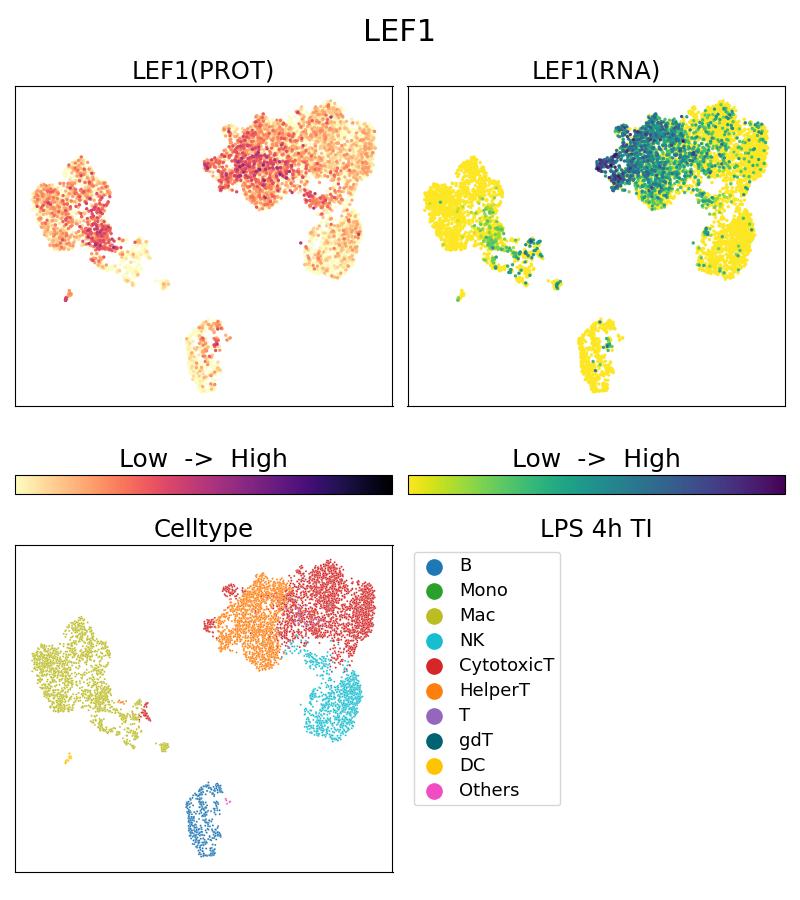验证数据展示
经过测试的应用
| Positive Single Cell (Intra) detected in | 10x Genomics Gene Expression Flex with Feature Barcodes and Multiplexing product. |
推荐稀释比
| 应用 | 推荐稀释比 |
|---|---|
| SINGLE CELL (INTRA) | <0.5ug/test |
| It is recommended that this reagent should be titrated in each testing system to obtain optimal results. | |
产品信息
G14972-1-5C targets LEF1 in Single Cell (Intra) applications and shows reactivity with Human samples.
| 经测试应用 | Single Cell (Intra) Application Description |
| 经测试反应性 | Human |
| 免疫原 | LEF1 fusion protein Ag6882 种属同源性预测 |
| 宿主/亚型 | Rabbit / IgG |
| 抗体类别 | Oligo Conjugate |
| 产品类型 | Polyclonal |
| 全称 | MultiPro® 5CFLX Anti-Human LEF1 (Polyclonal) |
| 别名 | LEF 1, LEF1, TCF1 alpha, TCF1ALPHA |
| 计算分子量 | 37 kDa |
| GenBank蛋白编号 | BC050632 |
| 基因名称 | LEF1 |
| Gene ID (NCBI) | 51176 |
| ENSEMBL Gene ID | ENSG00000138795 |
| RRID | AB_3673889 |
| 偶联类型 | 5CFLX |
| 完整寡核苷酸序列 | CGGAGATGTGTATAAGAGACAGCATACAGGCTGACAACCCATATAAGAAA |
| 条形码序列 | CATACAGGCTGACAA |
| 形式 | Liquid |
| UNIPROT ID | Q9UJU2 |
| 储存缓冲液 | PBS with 1mM EDTA and 0.09% sodium azide , pH 7.3. |
| 储存条件 | 2-8°C Stable for one year after shipment. |
背景介绍
Lymphoid enhancer-binding factor 1(LEF1) belongs to a family of regulatory protein share homology with high mobility group protein-1, and it's a nuclear protein exprssed in pre-B and T cells. LEF1 has a role in the Wnt signaling pathway and hair cell differentiation and follicle morphogenesis. Together with CTNNB1 and EP300, LEF1 activates transcription of target genes. Isoform 5 transcriptionally activates the fibronectin promoter, binds to and represses transcription from the E-cadherin promoter in a CTNNB1-independent manner, and is involved in reducing cellular aggregation and increasing cell migration of pancreatic cancer cells. Isoform 1 transcriptionally activates MYC and CCND1 expression and enhances proliferation of pancreatic tumor cells. MECs can give rise to seven cell types of the SAE and SMGs following severe airway injury. MECs progressively adopted a basal cell phenotype on the SAE and established lasting progenitors capable of further regeneration following reinjury. MECs activate Wnt-regulated transcription factors (Lef-1/TCF7) following injury and Lef-1 induction in cultured MECs promoted transition to a basal cell phenotype. Surprisingly, dose-dependent MEC conditional activation of Lef-1in vivopromoted self-limited airway regeneration in the absence of injury. Thus, modulating the Lef-1 transcriptional program in MEC-derived progenitors may have regenerative medicine applications for lung diseases. (https://doi.org/10.1016/j.stem.2018.03.017) The phosphorylation may affects LEF1 protein's theoretical molecular weight when tested.40-70 kD bands have also been reported (PMID: 22261717; 17063141 ).
Protocols
| Our current MultiPro staining protocol for the cocktail | Download protocol |
| 10x Genomics CG000149_Demonstrated Protocol CellSurface Protein Labeling_Rev D.pdf | Download protocol |

